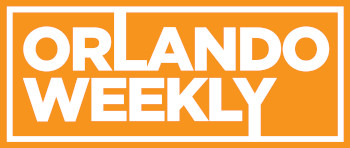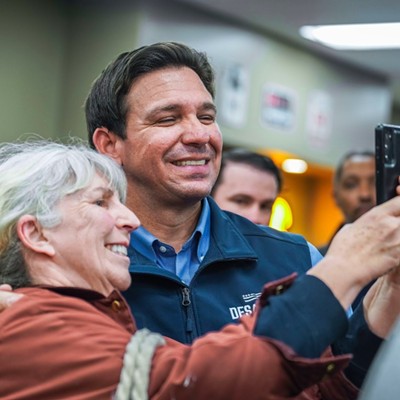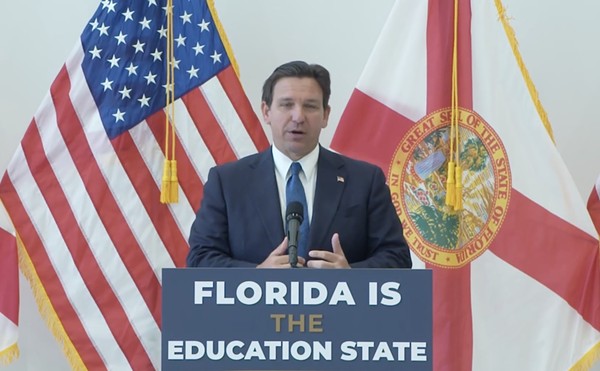Just a year ago, it seemed nothing could halt light rail's advance into Central Florida. The need certainly existed -- as all who commute on I-4 could attest -- and so did the money. Using his rank on an all-important transportation committee, Congressman John Mica secured a $330 million pledge from the feds to help finance the project, which would have linked downtown Orlando to I-Drive.
Then the plan unraveled. Orlando and Orange County governments clashed; flare-ups about the cost and destination sidetracked what had been considered a done deal. When Orange County backed out, Orlando Mayor Glenda Hood tried to push through a shortened line to capitalize on the lingering state and federal dollars. The move backfired, and the money disappeared.
Light rail was dead.
But the need remains. Orlando is one of very few metropolitan areas without an existing or planned commuter rail system. I-4 is a traffic nightmare, and proposed widening, transportation officials say, will do little to solve the problem.
But even as the defeated project was being buried in political rhetoric, eight other commuter lines, most relying on rail, have moved ahead in the last six months. The ideas vary widely, both in their destinations and equipment -- and, to some extent, their practicality. But all underlie the need for something.
Local politicos and community leaders back these proposals -- at least in their early stages. But as with light rail, support could evaporate when the real decisions have to be made. Indeed, nothing is certain about commuter rail in Central Florida except the uncertainty.
If successful, this wave of proposals could revive the quest for alternative mass transportation, bringing renewed interest from the federal government and, eventually, a permanent rail system.
Failure, however, likely would doom Central Florida's chances for establishing a system -- at least for a long, long time.
As light rail showed, mass transit requires governments to cooperate. In 1999, that proved impossible, much to Mica's dismay: "It's been sort of embarrassing," he admits. More important, the fiasco cost Central Florida some credibility with those in Washington, D.C., who distribute the cash. "Anytime you ask for money ... and then you back out, people look at you with skepticism," says Mica.
But he hasn't given up. Instead, he's pushing a demonstration commuter rail from Volusia to Osceola counties.
A demonstration rail? Quite simply, there's not enough money to build anything permanent. Light rail, as proposed, would have cost upwards of $600 million, with the feds contributing about half that sum. Local cities and investors were expected to make up the rest.
At the time the proposal fell apart, Congress had set aside $60 million, two-thirds of which already had been spent on studies and other preliminary costs -- leaving $18 million in the bank. Mica wants to salvage that money, and another $5 million he plans to ask of Congress, to "get us over the hump" until a permanent line is built.
Mica wants to lease 52 miles of CSX-owned track from Deltona or Debary through downtown Orlando and on toward the attractions area. The goal is to create an alternative to I-4, which likely will be tied up in construction for the next decade.
To date, Volusia County has chipped in $257,000 to back the rail. For the plan to work, other governments must follow suit. Although a leased line costs considerably less than a permanent one, Mica has only about one-third of the estimated $60 million cost on hand.
But that's enough to purchase equipment as soon as next year. The operating costs, he says, will be split between fares (estimated at $2 per ride), transit authorities and project partners like Volusia.
If Mica succeeds, that line could be up and running in 2003.
That isn't to say there aren't stumbling blocks. For one thing, CSX has yet to OK the project, and it has even hinted that it won't -- a fact that some Orange County commissioners have noted in their reluctance to sign on. Mica, however, says he's talking to CSX and expects to strike a deal; after all, CSX already leases track in Virginia and Maryland for similar uses.
The greatest hindrance to Mica's rail, however, could come from the failure of a predecessor, South Florida's Tri-Rail, which runs from Palm Beach County south to Miami. Tri-Rail has proven costly; it has drained $433 million so far, and reports say it needs another $327 million to stay alive. Despite the investment, Tri-Rail averages only 60 percent of its projected ridership, and governments subsidize more than 70 percent of the operating costs.
The problem? Essentially, Tri-Rail doesn't go anywhere. For most of its 11-year life, Tri-Rail delved only into northern Dade County. "That's like taking a train from Volusia and dropping people off at the Seminole County line," Mica says. Connections to major workplaces and airports rely on unreliable bus systems. Moreover, Tri-Rail only runs once an hour, and is frequently late at that.
Mica insists his rail project won't repeat the same mistakes. First, it will intersect both downtown Orlando and Orlando International Airport, making it convenient for a large number of commuters. He points out that 72 percent of Seminole County residents and 90 percent of southwest Volusia County residents work outside their county.
"In Dade County," he says, "people have different choices. They can take the turnpike or a number of north-south streets. In Orlando, you have I-4 or [U.S. Highway] 17-92 to go over the St. Johns River." Out of the sheer lack of options, Mica says, people will ride rail, and lots of them. Fares are projected to cover 64 percent of the operating costs -- 22 percent above the national average.
Mica isn't the only one with a demonstration project, however.
Florida Central Railroad and the city of Apopka have teamed to promote a Eustis-to-Orlando rail that would run on 35 miles of CSX-owned, Florida Central-operated track along U.S. Highway 441.
And the idea is catching some steam. Two weeks ago, the Orange County Commission approved $12,500 for a study, matching a pledge from Apopka. Orlando, the regional transit authority known as Metroplan Orlando and Florida Central Railroad are expected to contribute as well. Should regional authorities sign off on it, says Florida Central president Bob Biscan, the state likely would fund the rest of the $250,000- to-$300,000 study.
Costwise, that line tops Mica's at $64 million; about $14 million of that would go toward rail improvements, which can be done while the rail cars are being built.
At some point, however, the Lake County line would require Mica's backing. The equipment, Biscan says, will cost about $25 million, which he wants the federal government to pay.
Mica says he supports a study of that rail corridor, but it's not his priority.
Along with Orlando's light-rail fiasco, rail backers faced a setback when Gov. Jeb Bush deep-sixed a bullet train just days after taking office. That proposal would have linked Miami, Orlando and Tampa via a 120-mile-per-hour train. Bush thought it too expensive.
But some ideas die hard.
Retired Lakeland businessman and Republican C.C. "Doc" Dockery is petitioning for an amendment to the state constitution that would require some sort of statewide rail system by 2003. Dockery's petition is currently being reviewed by the state Supreme Court. If OK'd, Dockery would have until fall to collect the 400,000-plus signatures he needs to get it on the Nov. 8 ballot.
Dockery's idea has drawn criticism from lawmakers, who feel it's too generic. Namely, it fails to specify what type of line should be built, how it should be paid for or even where it should go.
But Dockery says a constitutional amendment is needed to enact a project of this size. "We really don't have the political continuity to do this," he says. "That's why I want to get it on the ballot."
Dockery is also a board member of Florida 2012, the coalition of Central Florida and Tampa Bay business leaders and politicians chasing the 2012 summer Olympics. As the congested highways now stand, Dockery admits, Florida 2012 doesn't have a chance. "The bid will not be successful unless we find an alternate means of transporting people between the venues," he says.
Thus, Florida 2012 and other business interests have resurrected the idea of a bullet train, this one linking Orlando to Tampa. A state panel recently recommended that $900,000 budgeted for the original bullet train be steered toward a study of this new route, which eventually could reach to Port Canaveral. A decision on that expense is due this spring.
"The rail's an outgrowth of the Olympic effort," says Florida 2012 co-chairman Ed Turanchik. But, he stresses, the rail is not dependent on a successful bid. "This is intended to happen no matter what. Maybe the Olympics can get something done sooner."
Turanchik says the public will be tapped for the fixed costs, while a private railroad company will pay operating costs. Cars currently make about 15 million round trips between Orlando and Tampa each year, studies suggest; Turanchik predicts a number of those drivers would take the train. That ridership, he says, will make it easy for a rail operator to turn a profit -- "if someone will take the risk."
Should Dockery's amendment reach the ballot and prevail, an Orlando-to-Tampa rail would be a solid bet. Eventually, though, it probably will still need federal dollars. And that means it needs Mica, who offers support reluctantly. "We need to concentrate locally," Mica says.
Still, that doesn't mean he thinks the projects are incompatible. Mica has talked with Florida 2012 about combining their plans, says Turanchik.
"By serendipity," the latter muses, "[we're] coming up with a plan that could serve people."
State-crossing lines aren't the only ones on the table. Connections between the Orlando/Orange County Convention Center and Orlando International Airport also are back on track.
Such a link was a spin-off of the defeated light-rail project, and died with it. But that hasn't stopped Pompano Beach-based Bee Line Monorail System Inc. from pushing a privately constructed line that would connect I-Drive to the airport, and then parallel the Bee Line Highway east to Port Canaveral. The company thinks the monorail -- the first leg from I-Drive to the airport could be completed by 2003 -- could claim as much as 35 percent of the Bee Line's annual traffic, or 19 million riders.
Meanwhile, Orange County also is conducting a study into an I-Drive circulator system. The result, says Orange County's chief transportation planner, Renzo Nastasi, could be anything from light rail to a bus system.
Additionally, the state recently gave Lynx $700,000 to restudy a northern light-rail corridor, from downtown to State Road 434. Last year, plans for a northern corridor were scrapped by complaints from Maitland, Winter Park and Eatonville residents, who didn't like the path it would take. "The importance," says Lynx spokesman Warren Wright, "is that whenever something is built, there will be no questions about where it will go."
That's one issue Disney wouldn't have to deal with. In December, the Sentinel reported the theme-park giant was considering a light-rail system to connect its resorts. That's not exactly so, says Disney spokesman Bill Warren. Light rail, he says, is simply one of many different ideas "in the realm of possibility."
In the realm of reality, however, lies the Dora Doodlebug -- "the most active passenger rail operation in Central Florida," according to Mount Dora Scenic Railway Co. president Steven Torrico. And when the renovation of two-and-a-half miles of connecting track is completed later this month, Torrico will expand his operation, offering regular trips to Tavares and charters to Orlando.
The Doodlebug, which began operating in late 1998, isn't a marvel of modern technology. It's actually a throwback to the vintage rail cars of the Prohibition era. The cars are light, self-propelled, and carry about 30 passengers. Around Mount Dora, the 50-passenger cars travel around 15 mph, though Torrico says they can go a bit faster -- maybe 30 to 40 mph -- if pushed.
While the Doodlebug isn't well-suited to intercity travel -- a Mount Dora to Orlando trek would take over an hour -- Torrico still sees growth potential. Sever-al municipalities have asked him about bringing his Doodlebug to their area. The reason: His rail cars are cheap. Each costs only $160,000, compared to about $2.3 million for a light-rail car. An Orlando to I-Drive route, he says, "would be the perfect venue for our cars."
All of the proposals and corridor studies are geared to 2003, when Congress will again allocate its mass-transit dollars. Under the federal gas-tax formula, Washington spends 20 percent of every dollar on mass transit. A small percentage of that money goes toward buses, but by and large, the government looks to fund projects.
Even having a project to fund doesn't guarantee anything, especially given the increased competition. Since Mica took office in 1993, the number of communities seeking federal mass-transit dollars has risen from about 25 to 190.
Honolulu is one competitor. Fifteen years ago, Lynx's Wright says, its position was much like Orlando's; only now is it getting a second shot at mass-transit money.
Mica agrees: "When you get out of line you lose your place."
That doesn't mean all hope is lost, at least as long as Mica remains on the transportation committee. But even if Mica can force Orlando back into consideration, some things will have to happen for the area to get another chance.
The most important thing, Mica says, is building a consensus. Funding "depends on if we have our act together."
Financial support is paramount. The more money local governments raise, the more likely the feds are to respond in kind.
But just as important is preparation. Preliminary work on any project this size takes three to five years, Wright says. If the area starts now, it'll be in good shape come 2003.
But that might not be possible. When its funding ran dry, Lynx let go all of its light-rail planners and developers
In a sense, that could mean the end of the line. For any such plan to go forward, the community needs to be behind it, and Central Florida's support of rail remains mixed. Many people simply think it's not economically feasible.
But the fact remains that while light rail would have cost $600 million, it'll cost just as much to renovate the interchange of I-4 and the East-West Expressway. Widening I-4 from I-95 to the Polk County line will cost about $3 billion -- 500 percent more -- and take at least 10 years. And when it's over, the widening will be offset by all the increased number of cars.
"As bad as [I-4] is today," Wright says, "that's the best its gonna get."

















